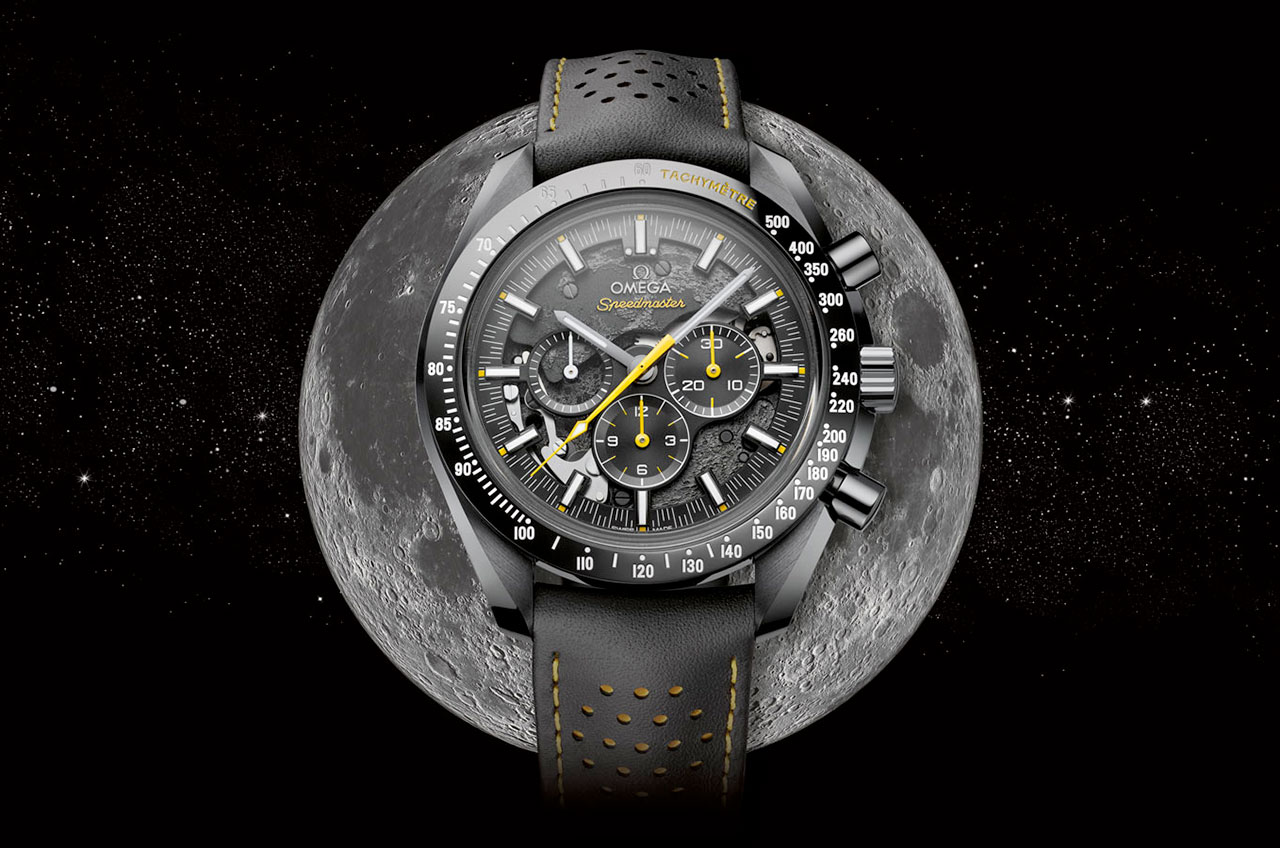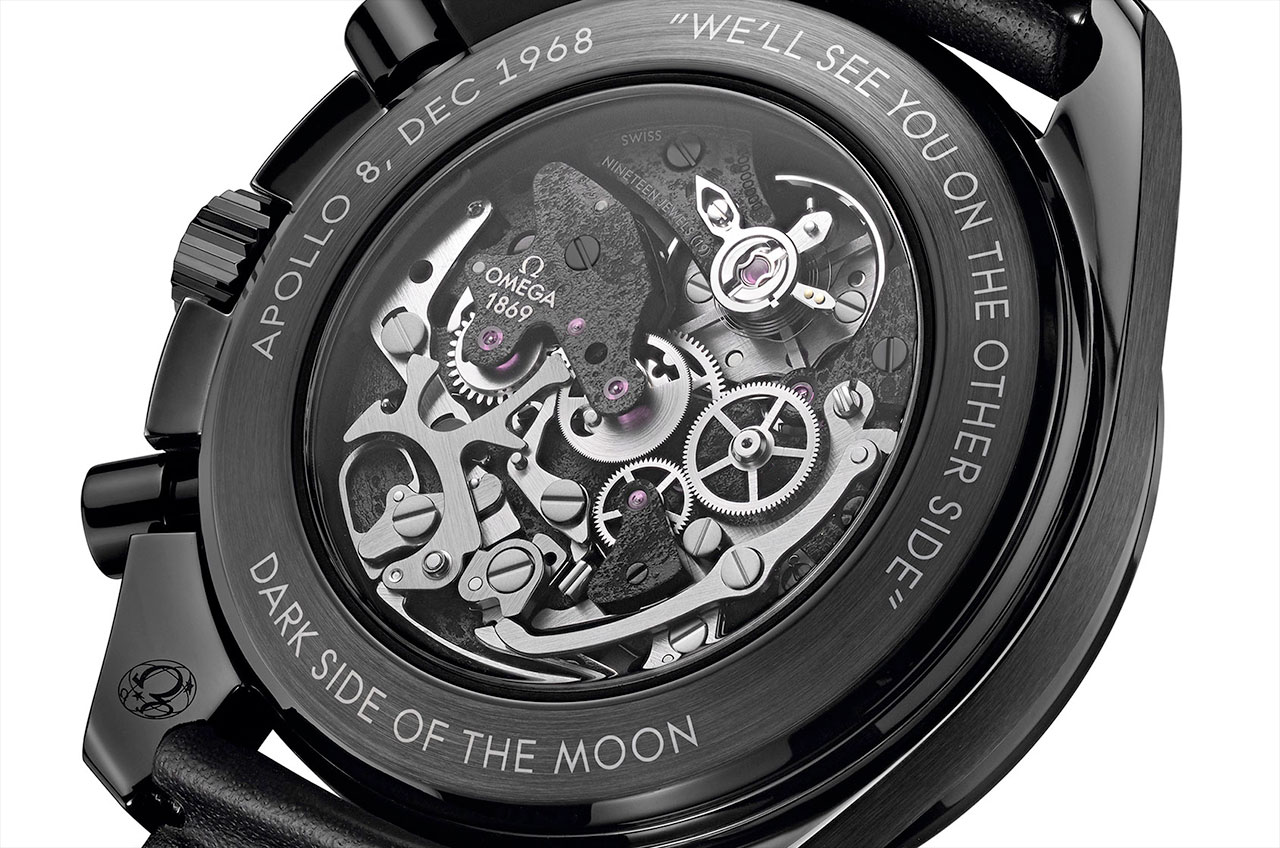Omega Reveals 'Dark Side of the Moon' Chronograph for Apollo 8 50th

The 50th anniversary of the first mission to fly humans to the moon has inspired the design of a new timepiece from the watchmaker that made the chronographs worn by the crew.
NASA's Apollo 8 astronauts, Frank Borman, Jim Lovell and Bill Anders, were the first to view the far side, or colloquially, "dark side" of Earth's natural satellite while orbiting the moon in December 1968. Half a century later, Omega has brought into view the Speedmaster "Dark Side of the Moon" Apollo 8 chronograph.
"Omega has released a Speedmaster that truly brings the lunar surface to life," the watchmaker wrote. "The Apollo 8 crew became the first humans to ever see the dark side of the moon. Omega has produced this incredible chronograph in tribute to that mission." [The First Christmas in Space: An Apollo 8 Holiday History]
Omega debuted the Apollo 8 commemorative watch on Wednesday (March 21), a day ahead of the start of the Baselworld watch show in Basel, Switzerland. The $9,750 watch will be available from Omega's boutiques beginning in August.
'Dark Side'
As the Apollo 8 crew could attest, the moon does not have a literal "dark side."
Both the near and far sides of the moon — the sides that face towards and away from Earth, respectively — see equal amounts of sunlight. Figuratively though, the far side is sometimes referred to as the "dark side," referencing it being unseen — at least to everyone but the astronauts who traveled there.
In 2013, Omega introduced the first "Dark Side of the Moon" Speedmaster, which drew inspiration from the Apollo 8 mission by reimagining the watch first worn by moon-bound astronauts with a black ceramic dial. The new 2018 "Dark Side of the Moon" Apollo 8 model continues the all ceramic construction while integrating the look of the moon itself.
Get the Space.com Newsletter
Breaking space news, the latest updates on rocket launches, skywatching events and more!
"The dial has been expertly skeletonized to reveal a blackened movement inside," writes Omega on its website. "Most impressively, the movement has been laser-ablated to produce realistic imagery of the lunar surface."
The finely "cratered" face is offset by varnished yellow chronograph hands and a white tachymeter scale and crown. "Speedmaster" and "Tachymetre" also appear in yellow.

'Other Side'
On Christmas Eve 1968, just before the Apollo 8 command module passed behind the moon cutting off all contact with Earth, Lovell radioed down to Mission Control.
"We'll see you on the other side."
The same words are inscribed on the other side of Omega's timepiece, wrapping around the edge of the caseback, along with "Dark Side of the Moon" and "Apollo 8, Dec 1968."
The caseback, itself, is transparent, revealing the Caliber 1869 movement inside, inspired by how the first trip around the moon revealed the far side to human eyes.
"Look through its skeletonized dial and you'll discover the near and far sides of the moon decorated on the laser-ablated movement," writes Omega.
The Moonwatch chronograph is presented on a perforated black leather strap with yellow rubber through the middle.
Watch a video preview and see more photos of Omega's Speedmaster Dark Side of the Moon Apollo 8 chronograph at collectSPACE.
Follow collectSPACE.com on Facebook and on Twitter at @collectSPACE. Copyright 2018 collectSPACE.com. All rights reserved.
Join our Space Forums to keep talking space on the latest missions, night sky and more! And if you have a news tip, correction or comment, let us know at: community@space.com.

Robert Pearlman is a space historian, journalist and the founder and editor of collectSPACE.com, a daily news publication and community devoted to space history with a particular focus on how and where space exploration intersects with pop culture. Pearlman is also a contributing writer for Space.com and co-author of "Space Stations: The Art, Science, and Reality of Working in Space” published by Smithsonian Books in 2018.In 2009, he was inducted into the U.S. Space Camp Hall of Fame in Huntsville, Alabama. In 2021, he was honored by the American Astronautical Society with the Ordway Award for Sustained Excellence in Spaceflight History. In 2023, the National Space Club Florida Committee recognized Pearlman with the Kolcum News and Communications Award for excellence in telling the space story along the Space Coast and throughout the world.










